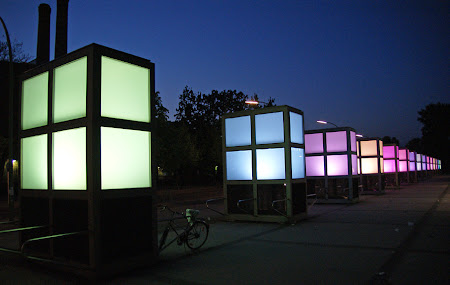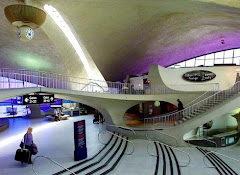As Kermit once said, "it's not easy being green". How true this quote is, especially within the design industry. How do we become "green"? How can we begin to implement green practice into our Revit projects? Do we need to purchase Ecotect, IES, et cetera?
Although those packages will help a great deal in pointing you and your firm in the right direction, we can start to follow the green bricked road to the Emerald City (also Green!). Before we even export our model into an analyzation package, we can fashion our Revit template to provide a data path that will direct us even before getting to that green road.
The use of schedules and its manipulation will display and lay out the necessary information we need to adjust and modify the design. Lets take a quick look.
We have to set the model up correctly at first by using the Room and Area tools. Make sure your room computations are set to "areas and volumes". This is will give us an accurate calculation. 
Once that is set, we can then apply parameters to window systems as well as scheduling properties to calculate the information. The NORTH, SOUTH, EAST, and WEST parameters were added to be contained only to windows and curtain panels.
The formulas utilized in this schedule are:
Window Area Width * Height / 1 SF
Glazing Area of Room % of Window Area: From Room: Name
Overall Glazing Area Window Area / Glazing Area of Room
Glazing Percentage of Room Overall Glazing Area / Room Area
Room Area From Room: Volume / From Room: Unbounded Height / 1 SF
Glazing Multiplier if(North, 0.05, if(South, 0.15, if(West, 0.07, if(East, 0.07, 1))))
Overheat Integer if(Glazing Percentage of Room < Glazing Multiplier, 1, 2)
Overheat if(Overheat Integer = 1, "no", "yes")
Once that is set, the information can then be calculated to give you the desired outputs. Again, remember that Revit does not qualify your project for LEED accreditation but merely points you in the right direction.

Tuesday, February 17, 2009
Green Templates Part I: Indoor Analysis and Glazing
Tuesday, February 3, 2009
The Digital Architect Series and 4D Planning

The Digital Architect Series was designed by Microdesk to facilitate and improve the design workflow as well as provide flexibility to your firm. If you utilize more than one program in your firm, chances are you are a prime candidate for the Digital Architect Series (DAS). DAS incorporates all aspects of the design workflow with existing, emerging, and future technologies to help alleviate overhead costs, downtime, and miscommunication.
With the advent of BIM technology and the Revit platform, more and more firms are adopting this new form of design and modeling. Taking information modeling to the next level is anyone's guess. We have seen other products, add-ons, and so on being mixed in with the BIM craze. Harnessing the BIM movement is up to you. Do you merely just want to implement BIM and totally abandon your old workflow? Of course not.
The Digital Architect Series realizes the need for every designer to evolve not just in technology but to be truly ahead of the rest, you need to evolve your workflow. DAS incorporates all Autodesk products other product family lines to create a smooth and efficient workflow that will help your company obtain higher revenue, lower overhead costs, and develop and modern approach to the workflow process. So much informaiton is lost in translation between programs that most times, you end up working on something that was already done.
Think about going from Google SketchUp to Revit to Ecotect to Navisworks to Primavera. The interoperability can sometimes cause headaches but realizing the your path and planning out an effective and efficient solution with DAS will help you get there. For more information on DAS, please visit www.microdesk.com.
I mention in the title of the idea of 4D. 4D design has and is a main component in project planning and workflow, but also can serve on various different levels in the BIM environment. A section of DAS focuses primarily on the aspect of 4D. Primavera is the leading program in 4D and Microdesk has implemented its use within the DAS. It is now possible to take a series course of Google SketchUp to Revit to Ecotect to Navisworks and finally to Primavera. A solid workflow that finalizes with 4D.
Primavera is the leading project and program management solution provider to the AEC Industry. No matter the size of a project, Primavera enables AEC organizations to effectively manage time, costs, resources, contracts and changes in a single solution. Primavera’s Integrated Project Management (IPM) provides each project participant with anytime, anywhere access to their project information. For more information on Primavera, visit www. primavera.com.
Microdesk is an authorized reseller of Primavera software!








